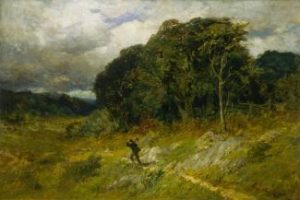By analyzing the Craft Narrative, I learned about not only the stark social and cultural differences between Northern and Southern citizens in America but of some surprising similarities in attitude regarding race and equality during the years leading up to the civil war.
An interesting social concept that Craft did a good job at highlighting was the way Southerners during the 1800s acted around and towards each other. The text showed how traditional values such as respect for elders and honor were engrained in the southern social culture. I found it almost funny that many times the Crafts escaped being caught solely because of the southern culture of respect. Ellen Craft was acting as a sickly white man. Many times the couple made it through because other southerners were raised not to question a white, sick man or give him a hard time. It seemed that the Northern society was generally less hostile, but did not adhere to the same social code as the Southerners.
In contrast with my previous ideas about Northern attitudes towards slaves, Craft’s narrative did a good job at exposing the racism that permeated Northern society. The racism the Craft’s experienced in the North was more subtle than that of the South but it was definitely present. An inn in the North was extremely reluctant to house the Craft’s when they presented themselves as an interracial couple. In fact, almost no inn in town would house them. There was no proudly proclaimed vulgar language or violence but the North was pretty racist in addition to the South, something that I didn’t totally realize before reading this text.
Despite all of the injustices presented to William and Ellen, Craft’s narrative is tame when compared to other slave narratives like Uncle Tom’s Cabin. Craft chose instead to use excerpts and poems from other writers to describe the most graphic or disturbing moments. Craft may have chosen to do this in order to preserve his credibility regarding a narrative that is as educational as it is exciting. Craft’s story was not particularly emotional. He told the events of his journey and provided the reader with real local and state laws to paint an objective, didactic picture of slavery in the early 1850s. When Craft wanted to show the pain and disgust felt by himself and other slaves, he employed passages from the bible or used poems from well-known poets like Cowper.
The extra texts within the Craft Narrative add to the writer’s credibility and help readers to believe that his written story is true and not exaggerated by emotion.
